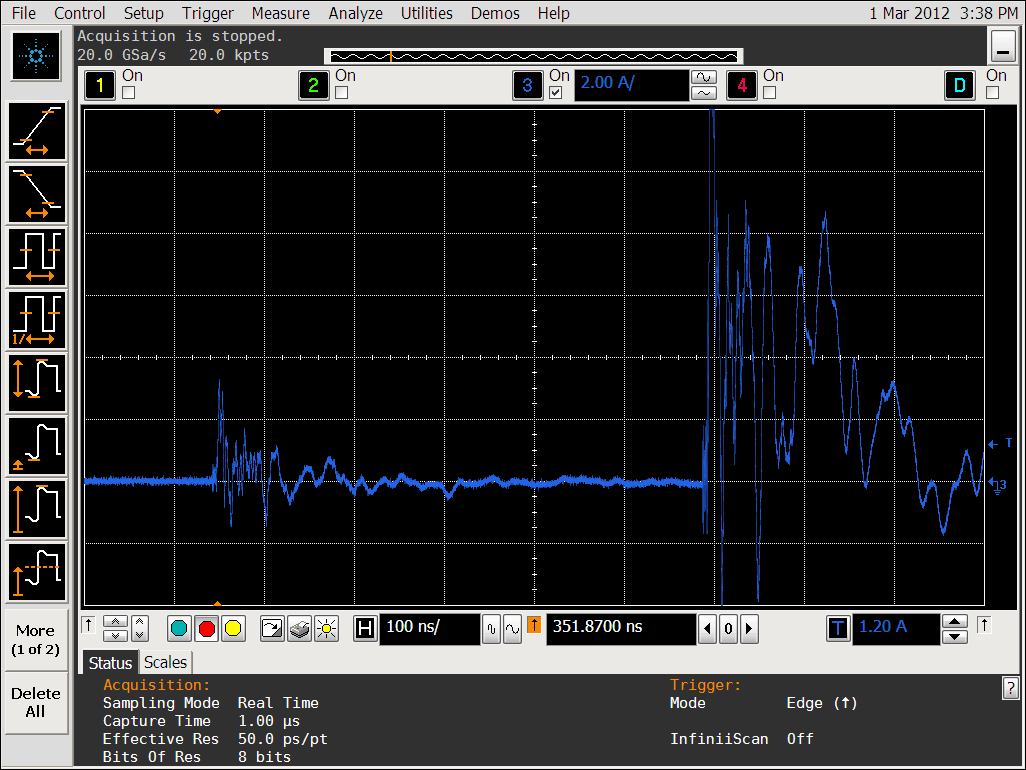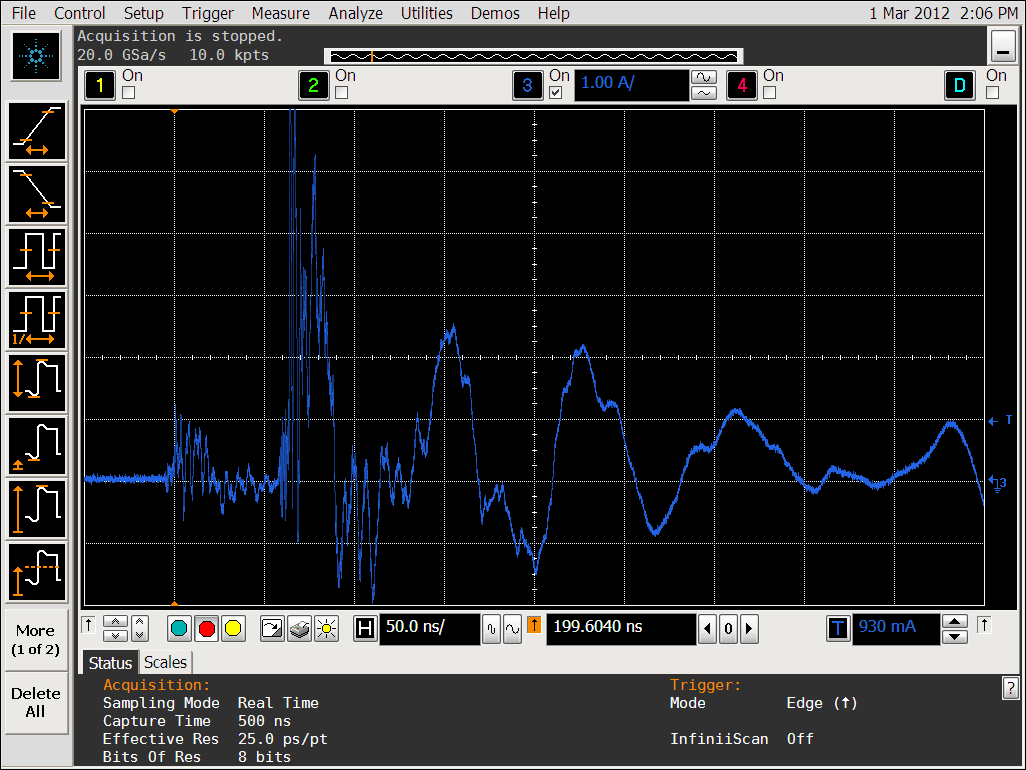Discussion: Figure 1 shows a
current waveform induced in a system cable of equipment that was
subjected to an air discharge ESD event above 10 kV. Most of the
current waveforms collected looked like a smooth version of the low
frequency damped sine wave with a period of about 75 ns in Figure 1.
But once in a while the waveform of Figure 1 resulted, and when it did
the system responded in a undesirable way.
Note the high frequency "hash" on the rising edge of the damped sine
wave. It is a pretty nasty waveform with a high di/dt of about 10 A/ns (estimated). The
hash persists for the first 100 ns of the damped sine wave. It
addition, note the small burst that arrives about 60 ns before the main
event.
In Figure 2, the main event occurs about 500 ns after the initial small
burst raising the possibility of a secondary air discharge in the
equipment itself as the source of the "main event" on the waveform.

Figure 2. Another Air Discharge ESD Current Measured on System Cable
(Vertical scale = 2 Amp/div, Horizontal Scale = 100 ns/div)
The
problem with air discharge is that individual discharges are highly
variable, especially at high voltages. The result is that a large
number of air ESD events must be applied to cover most of the possible
current waveforms and system effects that might occur. In addition,
characteristics of the discharge, and thus the current waveforms
generated, are a function of air pressure, humidity, and other factors.
Measuring current waveforms of ESD events is a great way to understand
what is happening. The equipment on which the waveforms in the figures
above were measured did not react to the ESD events that produced smooth current
waveforms. But when current waveforms with a lot of hash appeared, as
illustrated above, the equipment did react to those events. The current
measurement resulted in the understanding that the occasional equipment
failure was due to a noisy ESD event not because of a time dependency
in the system state as can sometimes be the case with ESD.
Summary: Current
measurements are a handy way to understand ESD effects and were used in
this article to show how high voltage ESD in air can produce some nasty
current waveforms and that these currents often affect equipment.
Equipment used in this article:
Additional articles on this website related to this topic are:



